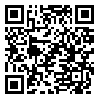BibTeX | RIS | EndNote | Medlars | ProCite | Reference Manager | RefWorks
Send citation to:
URL: http://ismj.bpums.ac.ir/article-1-629-en.html
2- Cellular Research Center,Department of Stem Cell, Tehran, IRAN
Department of Stem Cell and Developmental Biology, Royan Institute for Stem Cell Biology and Technology, ACECR, Tehran, IRAN , eslami@royaninstitute.org
3- Cellular and molecular Biology Research Center, Shahid Beheshti University of Medical Sciences, Teheran, IRAN
Background: Mesenchymal stem cells (MSCs) comprise a rare population of multipotent progenitors capable of supporting hematopoiesis and differentiating into three (osteogenic, adipogenic, and chondrogenic) or more (myogenic, cardiomyogenic, etc.) lineages. Due to this ability, MSCs appear to be an attractive tool in the context of tissue engineering and cell-based therapy. Currently, bone marrow represents the main source of MSCs for both experimental and clinical studies. The purpose of this study was isolation and quantitative comparison of mesenchymal stem cells derived from umbilical vein.
Materials and Methods: In this study, 35 samples of umbilical cord of healthy full- term newborn were studied.
Results: The cells had fibroblastoid like appearance and had revealed the potential to differentiate into three linage of bone, Adipose and cartilage. Surface markers for mesenchymal nature were their demonstratives.
Conclusion: Based on our findings the mesenchymal stem cells, from umbilical vein wall can be isolated, cultured and differentiated into three categories of bone, cartilage and adipose.
Received: 2012/03/5 | Accepted: 2013/07/23 | Published: 2014/12/18
| Rights and Permissions | |
 |
This work is licensed under a Creative Commons Attribution-NonCommercial 4.0 International License. |





